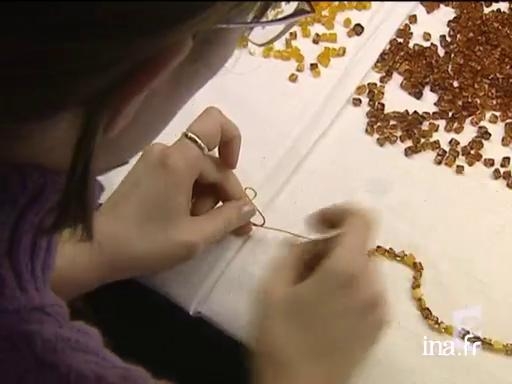Amber in Lithuania

Information
Report in Lithuania on amber, from ancient pagan legends that deified it up until its current transformation into jewelry.
Context
Amber comes from the fossilised remains of resin from pine and spruce forests that covered northern Europe 40 million years ago. Drenched in water, in these forests were subjected to their resinous components - and to the insects attracted by the odour that it released and thus trapped in the long process of fossilisation. This transformation led to the creation of a more or less translucent stone, with honey-like colours, particularly present on the coasts of Estonia, Latvia and Lithuania: and though. From the Stone Age, Baltic and, used decoratively or for medicinal purposes and always given magical powers, has been much bought and sold which shows it's great trade value. The amber routes were taken by merchants from northern Europe to the Mediterranean Sea, to India, to Kashmir, to Russia and even to China.
The discovery of DNA at the end of the twentieth century raised the hopes of scientists wishing to deepen their knowledge of prehistoric worlds by analysing the organisms trapped in these rocks. David Penney has thus been able to demonstrate in 2005 for the first time the presence of hemolymph, an equivalent to blood, in insects dating from 20 million years ago.




